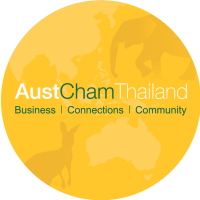By Dr. Iain Corness, Consultant, Bangkok Hospital Pattaya
Health, Wellness and Medical Tourism all sound as if they are related, but in reality are quite different.
Wellness tends towards the abstract concept, while Medical Tourism implies surgical procedures for the correction of a physical condition.
Wellness is defined as the quality or state of being in good health especially as an actively sought goal – lifestyles that promote the concept of wellness. The concept encompasses hardiness, lustiness, robustiousness, ruggedness, stamina, strength, toughness, vigor, vigorousness and vitality (Merriam Webster).
To be honest, people with those goals will not achieve personal Nirvana on a two week “health” tour with a daily work-out in the gym, in an exotic destination, such as Thailand. Or an even more “attractive” two weeks on board a passenger liner while the cognoscenti grunt while pumping iron and the tour group organizer grunts carrying the cash. The international movements of the singlets and lycra set belong to another review – not here.
Health tourism is a wider term for travel that focus on medical treatments and the use of overseas healthcare services. It covers a wide field of health-oriented, tourism ranging from preventive and health-conducive treatment to rehabilitation and curative forms of travel. Wellness tourism is only a related field.
Medical Tourism is one of the developing world’s buzz words, but there is a difference between Medical Tourism and Health and Wellness Tourism.
No, we must look at what can be obtained by people coming here with a surgical procedure in mind. These are the true Medical tourists. Medical tourism refers to people traveling to a country other than their own to obtain medical treatment. In the past this usually referred to those who traveled from less-developed countries to major medical centers in highly developed countries for treatment unavailable at home. However, in recent years it may equally refer to those from developed countries who travel to developing countries for lower priced medical treatments. The motivation may be also for medical services unavailable or illegal in the home country.
Medical tourism most often is for surgeries (plastic, cosmetic or otherwise) or similar treatments, though people also travel for dental tourism or fertility tourism. People with rare conditions may travel to countries where the treatment is better understood.
What are the problems in the way of Medical Tourism? These people leave the relative safety of their own healthcare systems to interface with another system in a country where popular opinion has it that everyone lives in bamboo huts and begs for rice. To overcome these obstacles in perception, it is necessary to have a ‘third person’ tell the potential Medical tourist what the hospital (health care provider) is really like.
One of the most trusted third persons is the Joint Commission International (JCI), an organization that can accredit the potential hospital or otherwise. The Joint Commission International (JCI) was formed in 1994 to provide international clients education and consulting services. JCI helps develop nationally and internationally recognized procedures and standards to help improve patient care and safety. They work with hospitals to help them meet Joint Commission standards for patient care and then accredit those hospitals meeting the standards.
Many international hospitals today see obtaining international accreditation as a way to attract overseas patients. The Bangkok Hospital Pattaya is one of them. We are now on our third re-accreditation, which occurs every three years.
With our fees for procedures less than half of Australian costs, the medical tourists can feel they are looking at an opportunity of Utopia. Two weeks on the beach plus air fares and a surgical procedure thrown in for the same outlay, what a bargain!
Almost all surgical procedures can be incorporated in Medical Tourism, but not all would-be international patients are suitable candidates for surgery.
The biggest problem is unreal expectations – a 55 year old woman with naturally sagging breasts, having had four children, is not going to look like Angelina Jolie after a breast lift and tummy tuck.
Trying to instill the concept of the best that can be done under the circumstances is not all that easy. To plagiarize Rene Descartes ‘Cogito ergo sum’ is sometimes needed. Just because you think you need, does not mean you really do need!
So who do we attract? The top six nationalities for our hospital come from the Middle East, China, America, Britain, Russia and Australia. And the medical tourists request mainly procedures from the Plastic surgery department, the Heart Center, the Dental Center and the Eye Department.
Catering for medical tourists is not an easy source of revenue, with the hospital staff assigned individually to concierge duties. That includes mobile phones and follow ups, and even shopping trips.



